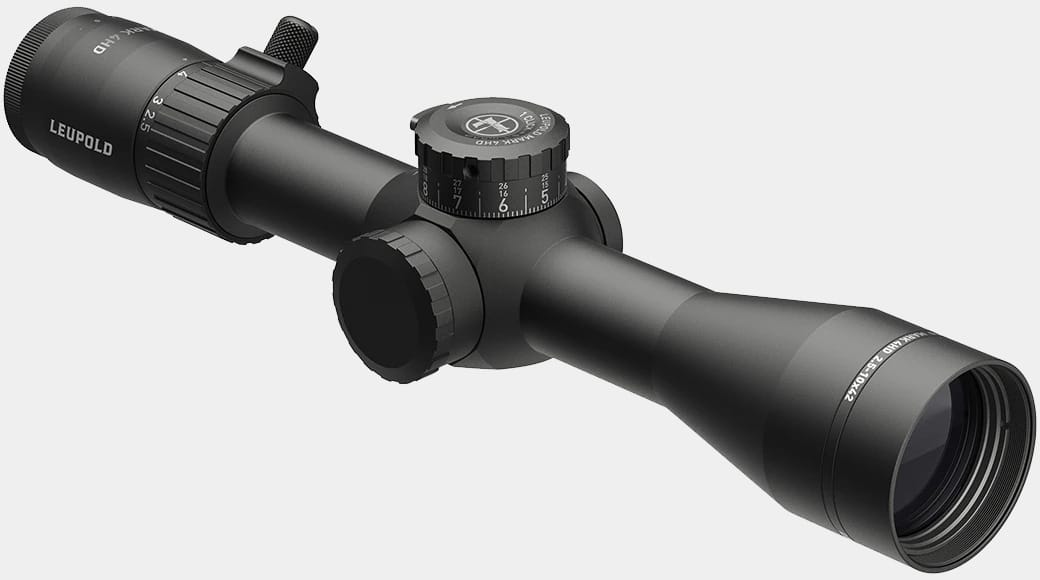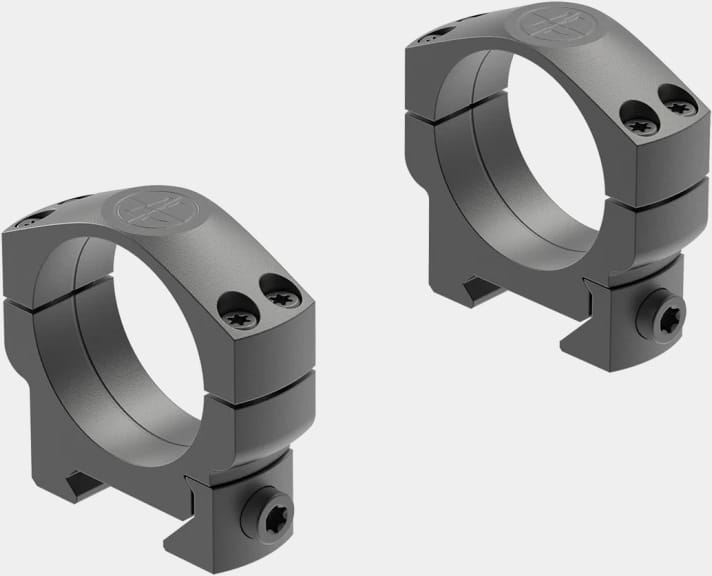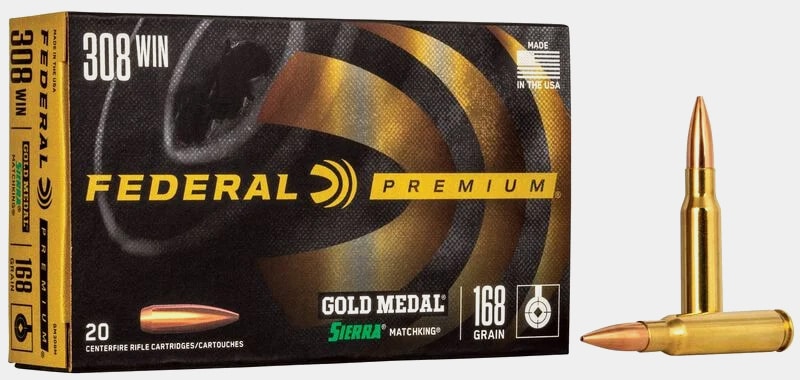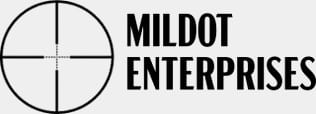In today’s review, Alan Rice reviews the Leupold Mark 4HD 2.5-10x rifle scope. With Springfield Armory’s M1A rifle as the test platform, the Leupold proved why the company enjoys a great reputation. The scope was provided by the company to the author for this review.
Leupold and Stevens has been making precision equipment in America since the earliest days of the 20th century. The company made its first rifle scope, the Plainsman, in 1946, and has kept improving ever since.
Those who do not fully understand things like mirage, range estimation and external ballistics might argue that a good shooter does not need the best equipment to hit the target. I disagree.
[Don’t miss Wayne van Zwoll’s Leupold history article for more information on the company.]
I’ve been a mid-range to long-range shooter for most of my adult life and I’ve used quite a few Leupold rifle scopes. The optical quality features have never been a disappointment. So, I was understandably excited when I was recently sent a Mark 4HD 2.5 -10 X42mm scope to test and review for The Armory Life.
The Details
This is an advanced optic in every sense. It can be used both as a tactical optic, or for recreational shooting or hunting. It seems that each year, high-quality, American-made optics become smaller, lighter and include more features than their predecessors — and the Mark 4HD is no exception.
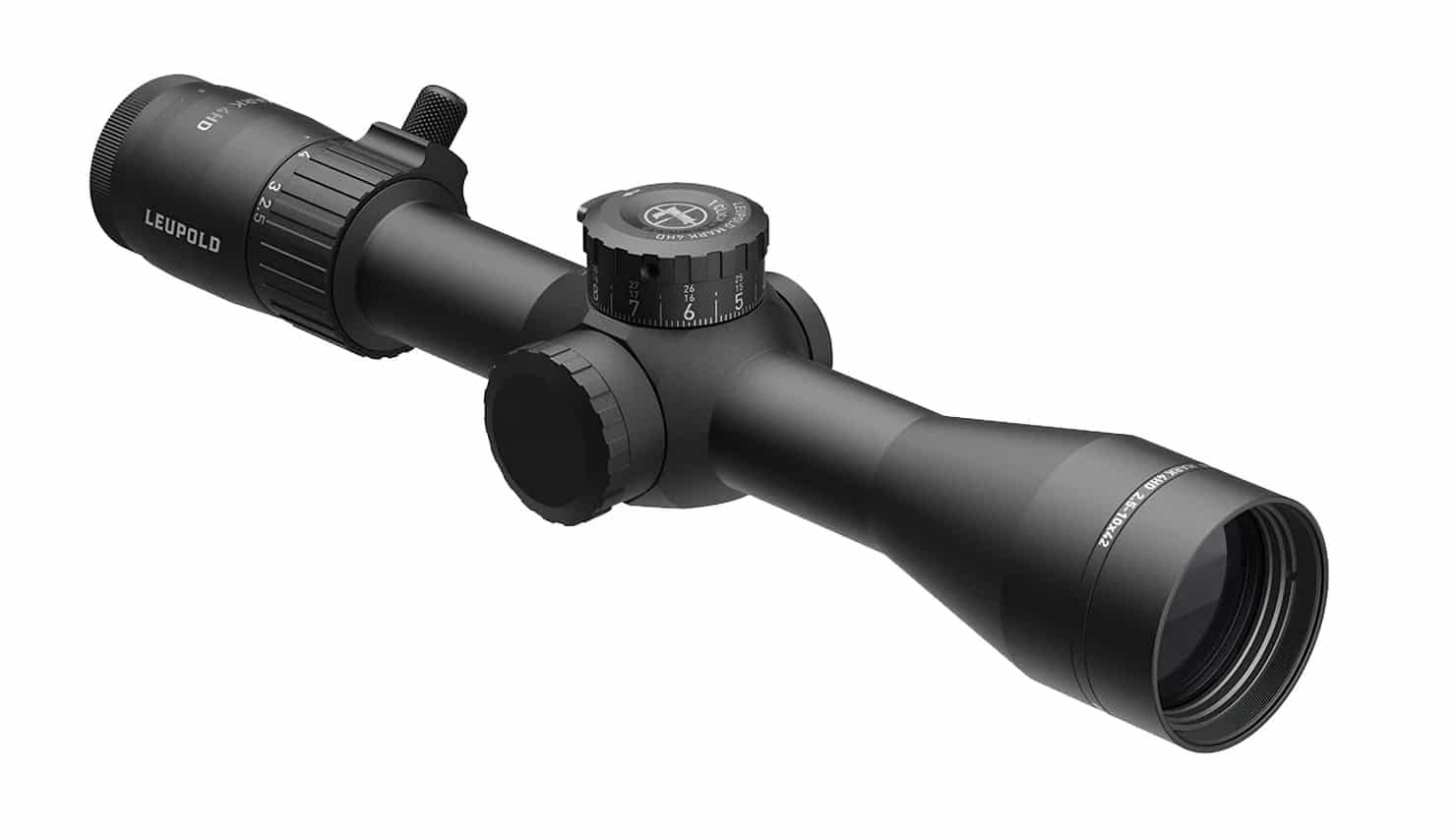
I’ve owned a Mark 4, 3.5- 10 LR/T for at least 20 years. It is an excellent scope that I still use. (See the author’s “My Three Decade Journey with an M1A” article). As good as that scope is, the current Mark 4HD is lighter, shorter and has a wider magnification range.
The lowest magnification setting is 2.5X, and the scope is 1.5” shorter than the older Mark 4 I’ve been using. I mounted the new Mark 4HD onto my M1A; the shorter length and the ability to adjust down to 2.5X instead of 3.5X makes this scope even more versatile than its older brother. Both scopes have a maximum magnification of 10X.
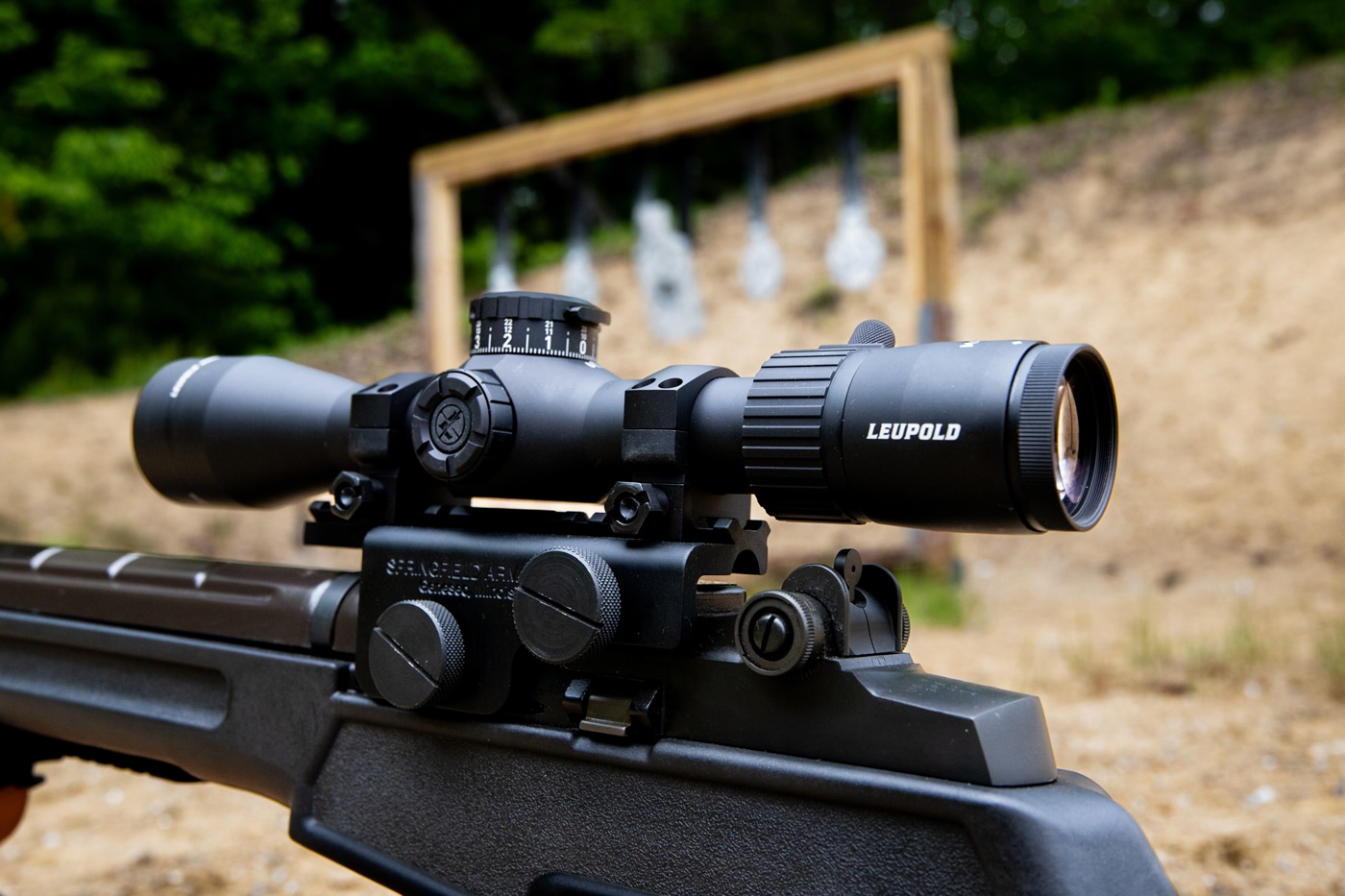
The illuminated reticle made a huge difference in target acquisition when shooting during early morning sunrise conditions as well as late afternoon sunsets. The high-quality optical glass allowed enough light transmission to be able to see the target when the illumination was turned off, but it took a bit longer to actually aim the rifle with the reticle turned off. (One should never shoot at a target that cannot be positively identified!)
An important feature of this reticle is its Motion Sensor Technology. This turns off the reticle after about five minutes of inactivity to help extend battery life. Nevertheless, it is good practice to turn off the optic if it will be stored for a long period of time or transported because the system detects any movement and the motion of a car, boat or airplane will keep the reticle “on.” My practice is to replace batteries in all illuminated reticles at least once per year. Changing the battery requires the use of a special tool that comes with the scope, and the optic uses the increasingly common CR2032 coin-type battery.
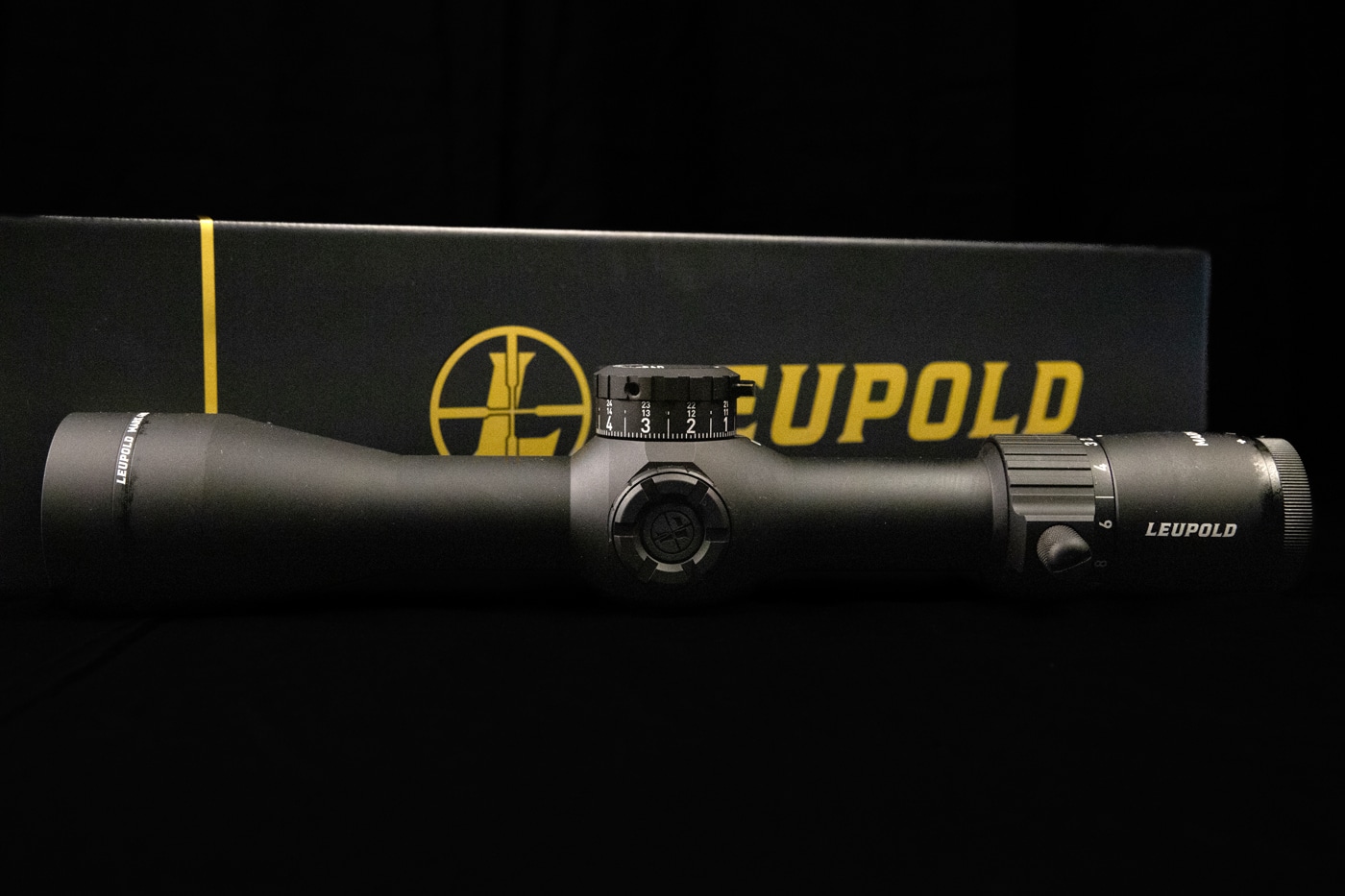
On an optic of this type, it is important to be able to quickly change magnification levels, and Leupold wisely included an integrated “throw lever” on the magnification ring.
Another very useful feature of the Mark 4 HD is the Zero Stop. Once the optic has been zeroed to the rifle, two small screws are loosened on the elevation turret so that the 0 mark is aligned with a vertical line on the scope body. The screws are then tightened. Elevation can be raised, but a small button must be depressed. The Zero Stop built into the elevation turret allows the shooter to always return the scope to a known “ZERO”. The windage turret allows a “zero” setting, but it is not a “stop.”
In Your Sights
Leupold offers a few different reticle choices. My scope is equipped with a Tactical Milling Reticle (TMR), which improves on the mil dot system by placing hash marks in one-half mil increments. It is an Illuminated first focal plane reticle, so range estimation can be done at all magnification levels.
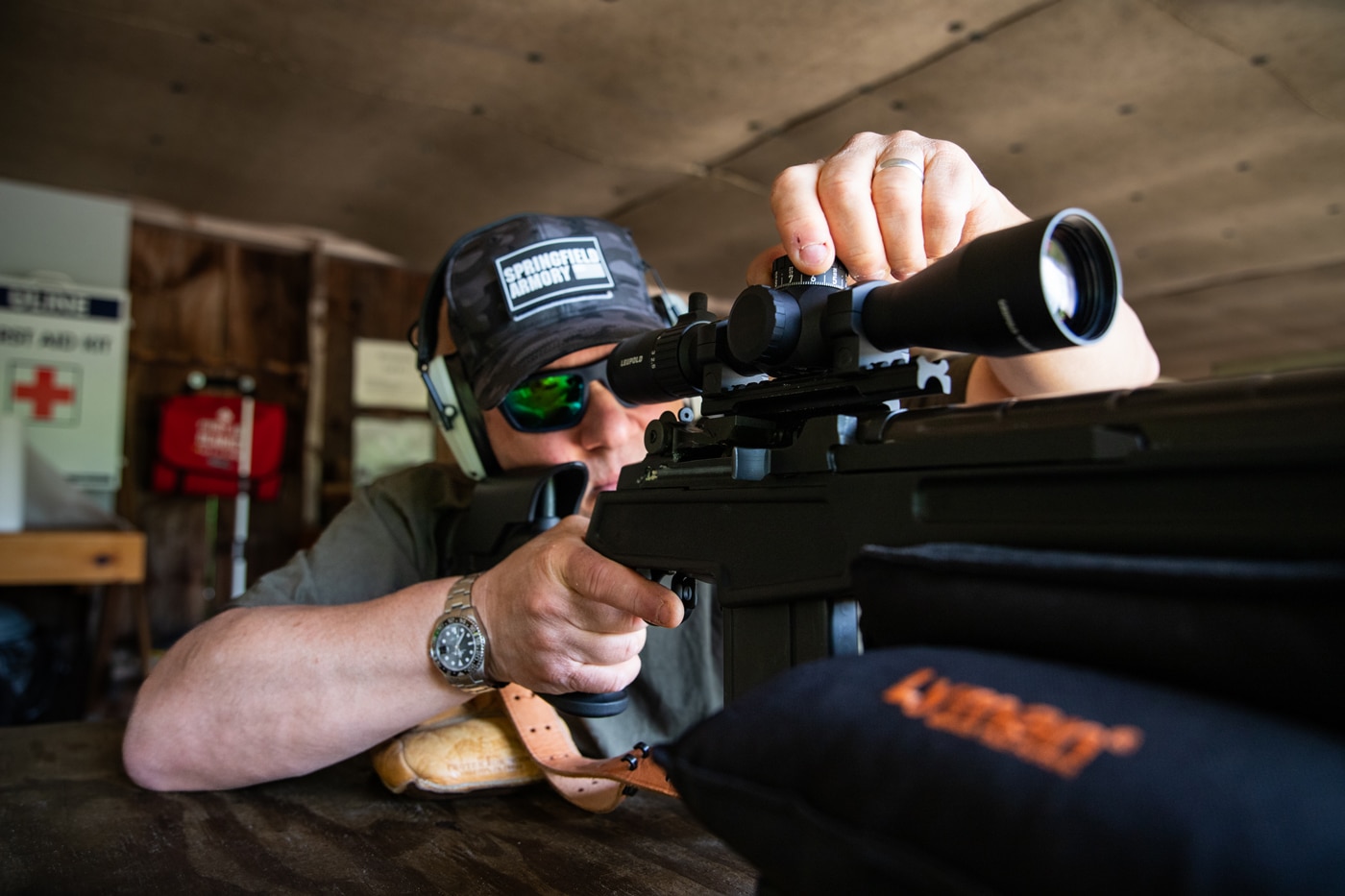
One Milliradian is equal to 3.6” at 100 yards, or 36” at 1,000 yards. If the marksman knows the approximate size of a fixed object, he can easily place the TMR reticle on the object and estimate the distance to the target. In order to properly use the system, the trajectory for the cartridge being used must be known.
On a first focal plane reticle, the reticle size and its hash marks increase and decrease with magnification changes. I find that the magnification ring needs to be set to at least 4x in order to be able to estimate distance to the target. Other shooters, with different eyes, may be able to use a lower setting.
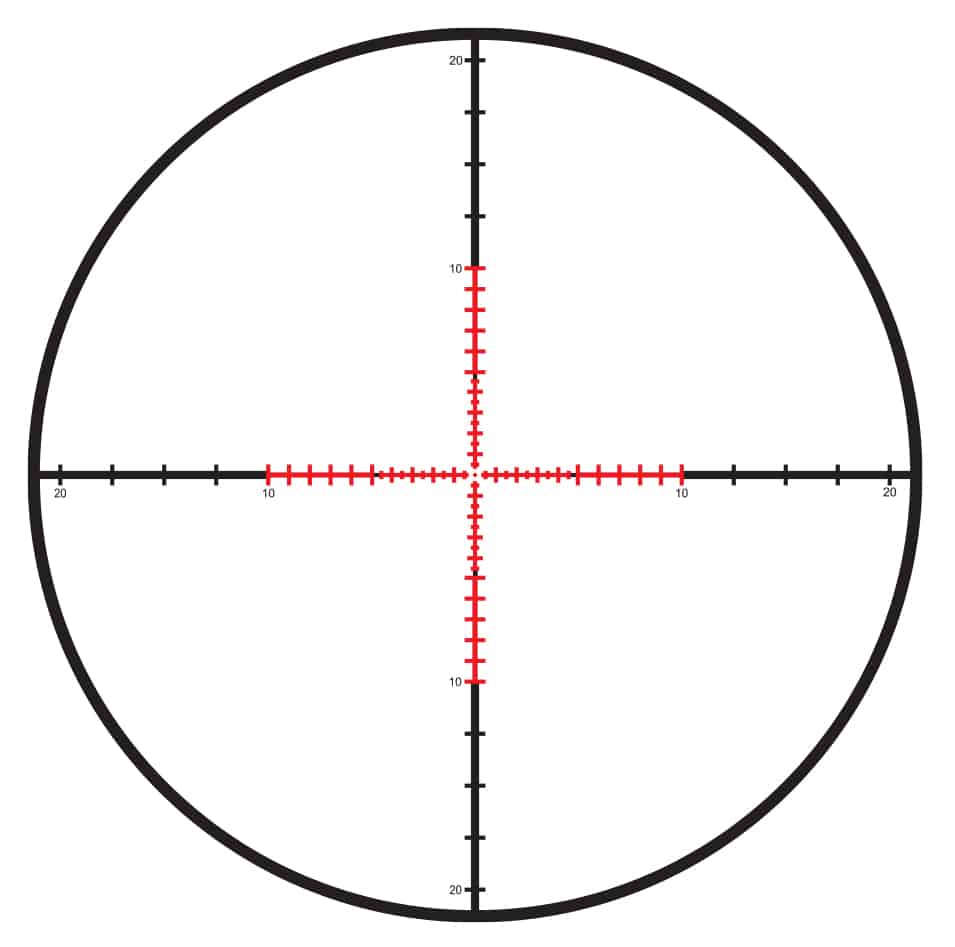
The Leupold Mark 4 HD provides almost 4” of eye relief. I found it easy to use the scope for aiming at all magnification levels. I did not experience any parallax or mirage on a sunny day. I used the scope at distances of 100 yards (seated at a bench) and prone at 200, 300 and 600 yards. Both the windage and elevation turrets have positive clicks. The value of each “click” is 1/10th of a MIL. A “click” will move the point of impact a little less than 3/8” at 100 yards.
In Practice
I zero .308 rifles at 300 yards. The Federal Gold Medal cartridge, loaded with a 168-gr., Center Strike Boat Tail Hollow Point bullet works well in my M1A. Federal says that cartridge has a muzzle velocity of 2,650 feet per second (fps). At that bullet weight and velocity, the projectile will drop about 6 feet between 300 and 600 yards. This means the scope’s elevation setting must be raised about 3.4 MILs to hit a target at 600 yards. While the M1A has a 21” barrel, Federal’s data comes from a 26” barrel. So, the bullet will be moving slower, and that is why I verify all ballistics calculations on a range and make a “dope card” for each specific rifle and ammunition combination.
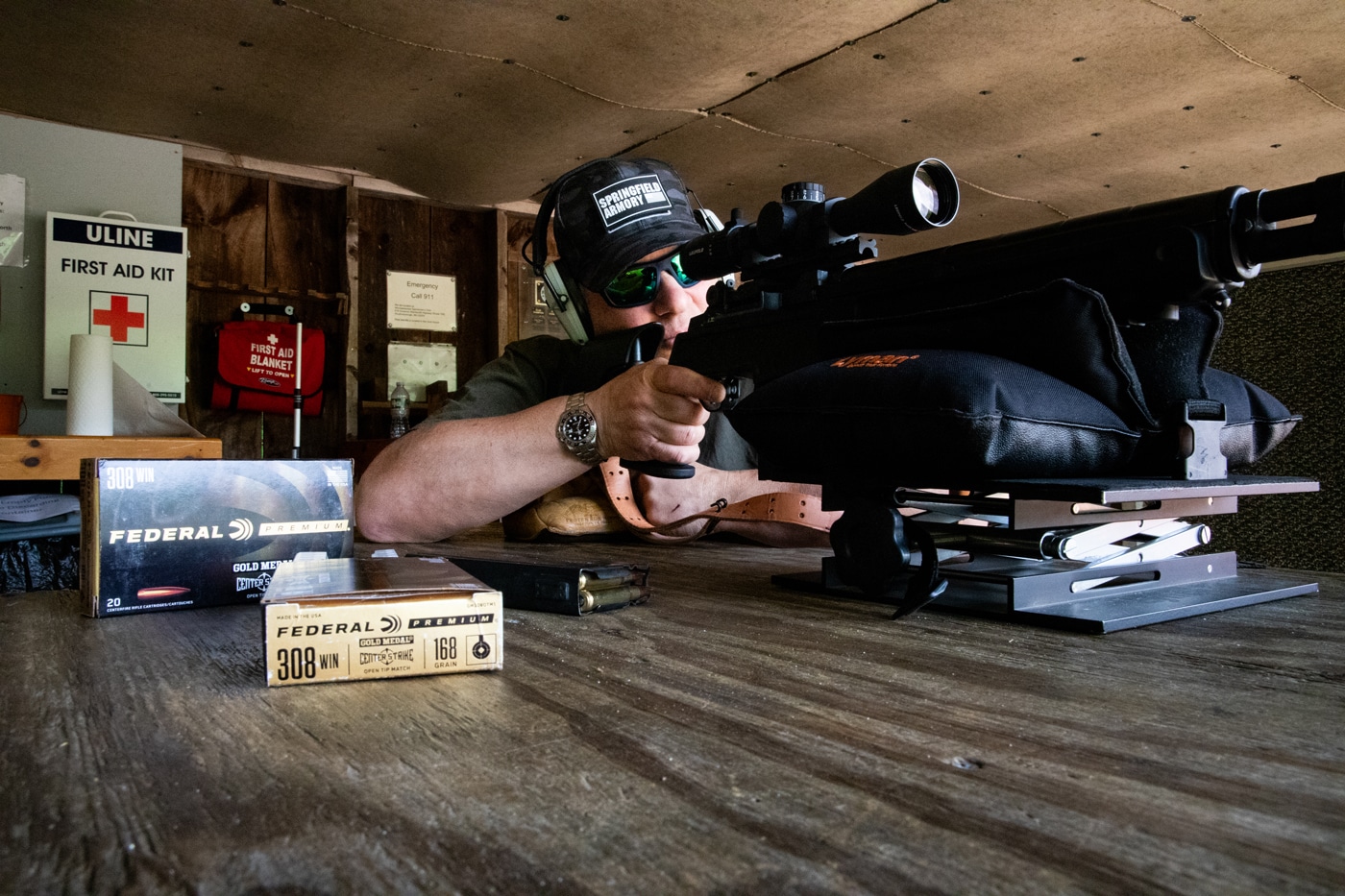
Two good resources for learning how to use the mil system are the ballistics calculator on the Federal Cartridge website and the Mil Dot Master. Federal preloads the calculator with bullet weight, ballistic coefficient and muzzle velocity for all the ammunition they make. Handloaders will need to enter their data manually.
After that, whether using a factory load or a handload, the calculator makes it easy to figure out how much to adjust the elevation setting. It presents the data in MOA, mils and inches. Federal also offers the calculator as a free iPhone or Android app, which makes it easy to use on the range. I verify the adjustments before writing them on a dope card.
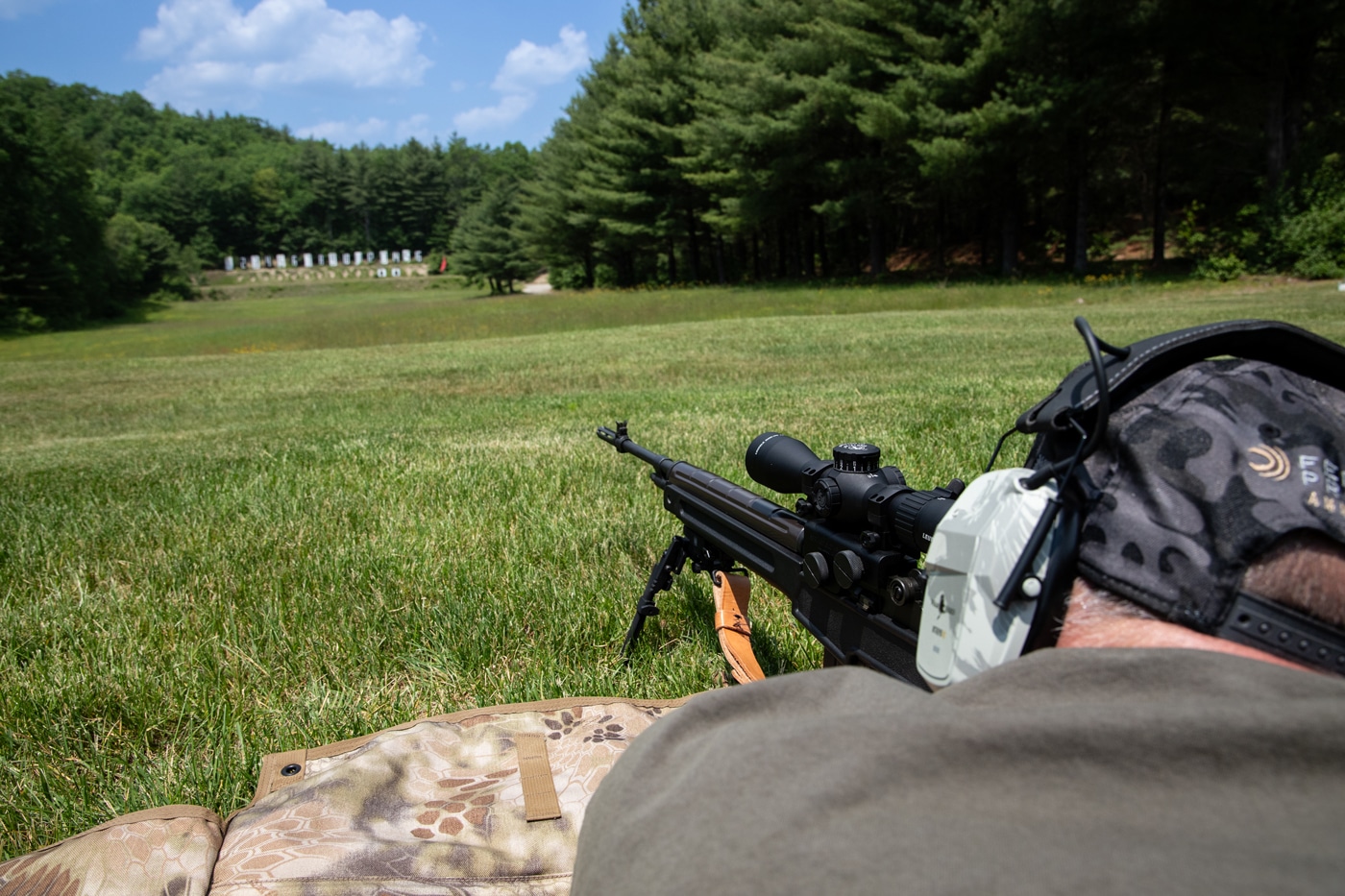
The Mil Dot Master works like a slide rule. A shooter just needs to align the number of mils with the size of the target on the left side, and then the right side will display the distance to target. The slide is reversible, so the data can be read in yards or meters. The far-right side of the scale converts the bullet drop from inches to MILs so that the scope can be adjusted. It’s a simple tool to use; batteries and advanced math skills are not needed. However, the shooter does need to know their zero range and the external ballistic data for the cartridge they are shooting.
The Mil Dot system can seem daunting. But it is far easier than measuring and adjusting in MOA and inches. Tools like the Mil Dot Master helps take the mystery out of it.
Conclusion
The Leupold Mark 4HD 2.5-10x42mm scope is a feature-rich optic that is an excellent choice for precision shooting. I like the included features, and I also enjoy using quality scopes from a company that has been in business for over a century and has produced rifle scopes for almost 80 years. Shooters can use Leupold products with confidence because they back their products with a Lifetime Guarantee. I know I can definitely trust it. MSRP is $1,199.
Editor’s Note: Please be sure to check out The Armory Life Forum, where you can comment about our daily articles, as well as just talk guns and gear. Click the “Go To Forum Thread” link below to jump in and discuss this article and much more!
Join the Discussion
Featured in this article
Read the full article here



